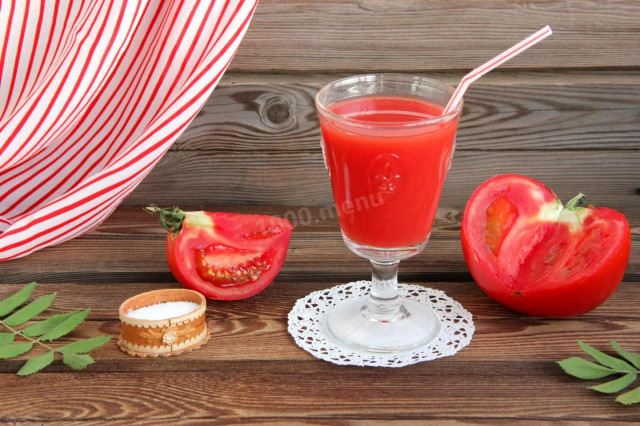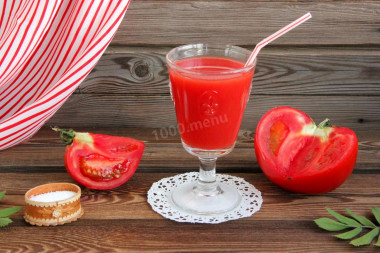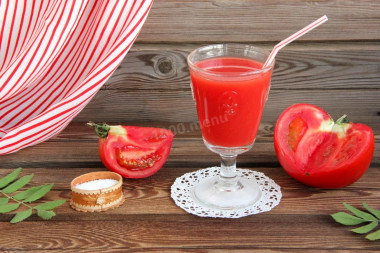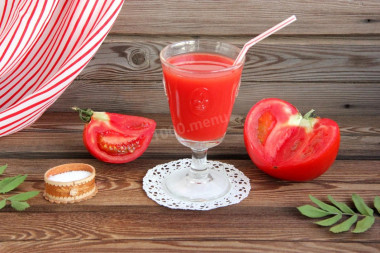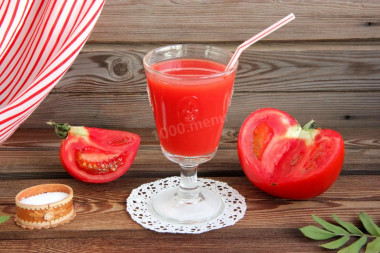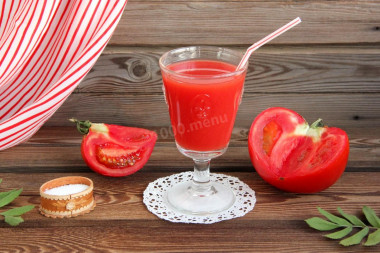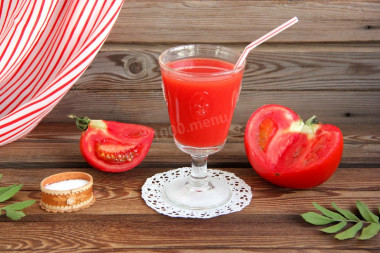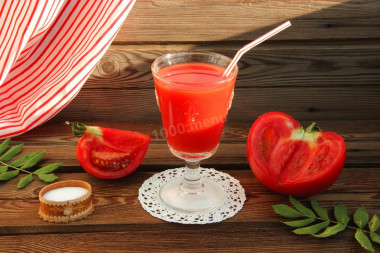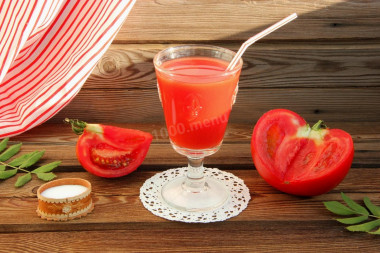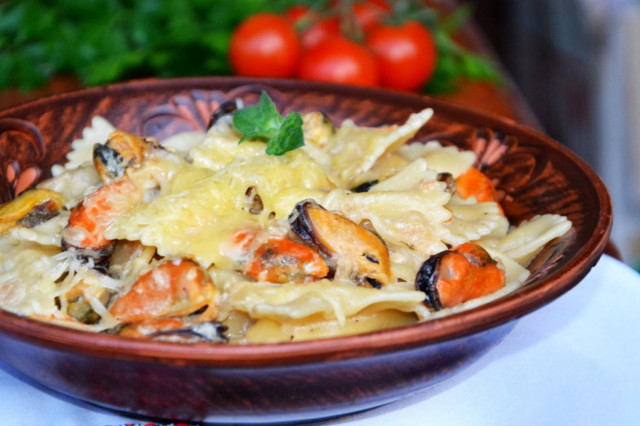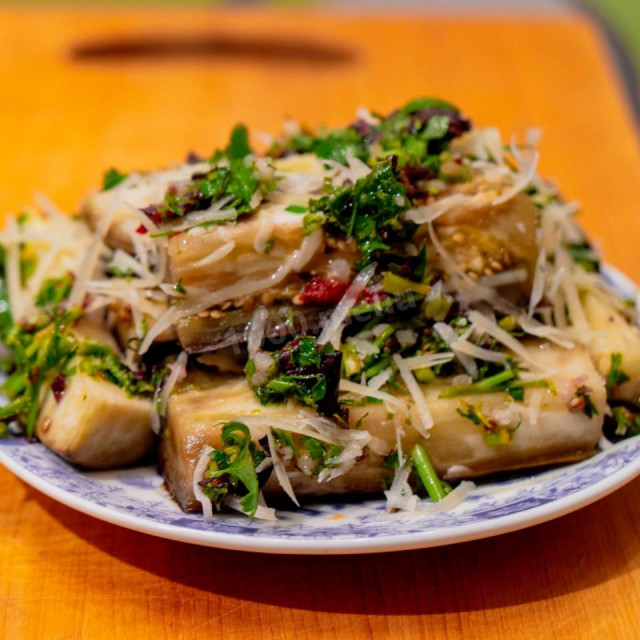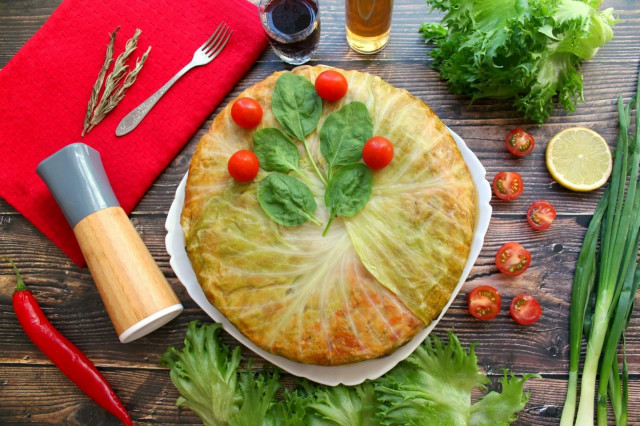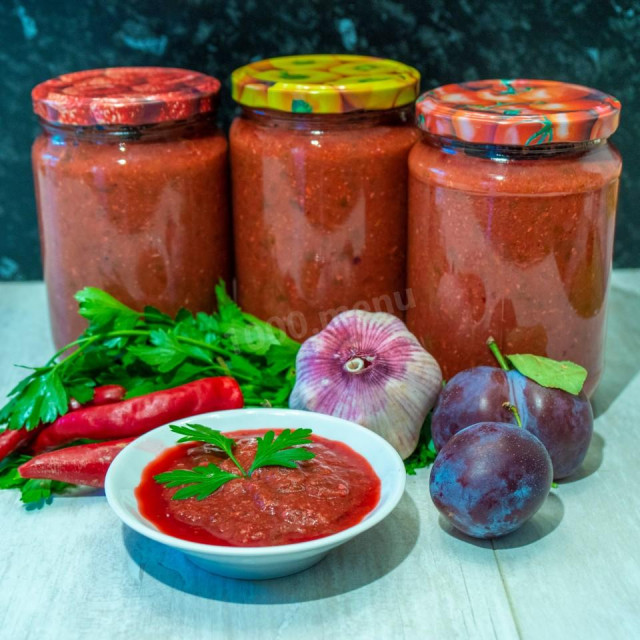Composition / ingredients
Step-by-step cooking
Step 1:
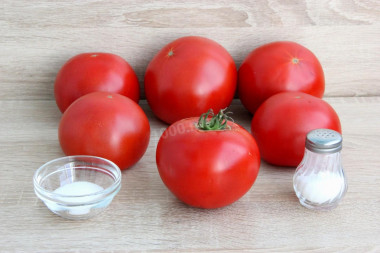
Tomatoes for juice should be chosen ripe, it is better if the variety is juicy.
Step 2:
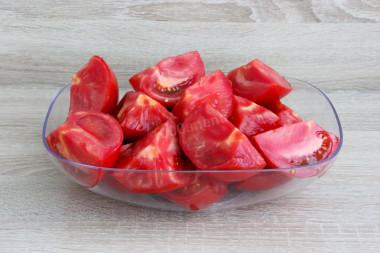
Wash tomatoes, cut into four parts. Cut out the peduncle and damaged places. I will drive tomatoes through a new generation juicer, so there is no need to remove the skin, the juice will come out very clean. If you use a meat grinder, blender or old juicers, you need to remove the skin from the tomato. To do this, cut the top of the tomato with a cross, put the fruit in boiling water in a colander for a minute and immediately move it to cold water. The skin will easily separate
Step 3:
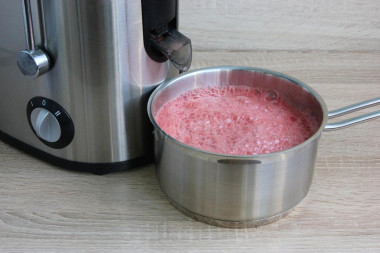
Pass the prepared tomatoes through a juicer or other chopping device and squeeze out the juice.
Step 4:
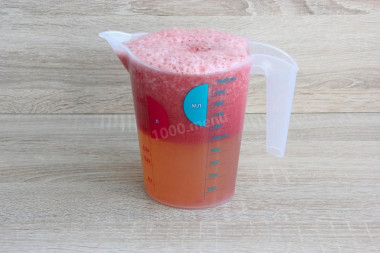
From 1.5 kg of juicy tomatoes, I got 1 liter of raw juice. The amount of juice may vary slightly, it all depends on the tomatoes themselves. From 1 liter of raw, ready-made juice, almost 800 ml turned out.
Step 5:
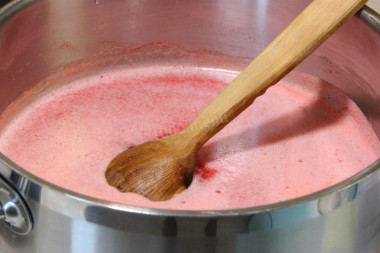
Pour the raw juice into a spacious container, as foam will rise when boiling. Start heating on low heat, then increase to medium -high and bring to a boil. At the moment of boiling, reduce the heat to the minimum. Cook stirring constantly so that the juice warms up evenly and does not burn.
Step 6:
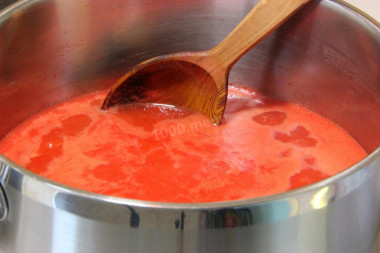
The foam will gradually settle and disappear.
Step 7:
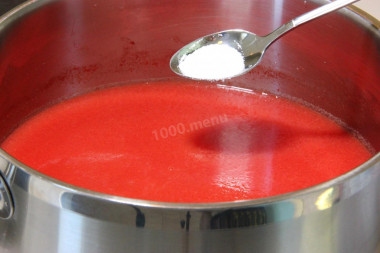
Add salt and sugar to taste in almost pure, boiled juice, stir and let it boil for 5 minutes. Add or not sugar, at your discretion, many people like only salt. But a small amount of sugar balances the taste of sour juice, for the sake of experiment, you can try it in a glass, if you like it, you can cook the whole volume like that. But it's definitely better to add pepper when serving, this is purely for an amateur, children refuse to drink with pepper, without salt at all, too.
Step 8:
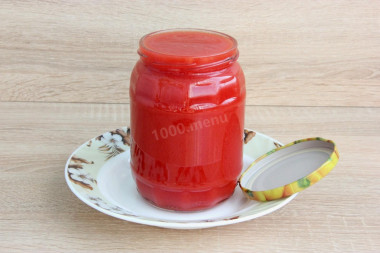
Then pour into a jar and let cool without covering, put in the refrigerator. The cooled juice is pleasant to drink, many people like to add pepper. Shake before use. Hot juice can be spun for the winter. Then pour into sterilized jars, immediately tighten with a sterile lid, turn over and leave to cool, covering with a fur coat". Put away for storage in a dark, cool place. It costs well until summer, but they drink quickly, it is not necessary to additionally sterilize.
Natural tomato juice has great value for the body:
* Improves digestion by stimulating the work of the intestines.
* Gently stimulates the production of bile, promotes the breakdown of fats.
* Cleanses the body of excess water, salts and decay products.
* Reduces weight.
* Strengthens the immune system.
* Lowers the pressure.
* Normalizes glucose levels, strengthens the heart and blood vessels.
* Normalizes the work of the central nervous system.
However, healthy tomato juice has its contraindications:
* Individual sensitivity or allergy to the product.
* Exacerbation of gastrointestinal diseases /gastritis, pancreatitis, ulcer, cholecystitis/.
* Acute gout.
* Hypotension.
* Increased acidity of the stomach.
* Acute heart and kidney failure.
* Severe poisoning.
* In the presence of large foci of stone formation.
In some cases, tomato juice can cause heartburn. This condition provokes a large amount of acids in the drink, which irritate the stomach receptors, stimulating increased production of hydrochloric acid. This is what causes the burning sensation.
For those who love juice and have no contraindications,
it is better to drink it half an hour before eating. This way it will be better absorbed, but it will not harm the stomach. Before going to bed, it is absolutely impossible to drink, even a healthy person will have heartburn in the morning.
Do not abuse the drink. The norm is a couple of glasses a day.
Caloric content of the products possible in the composition of the dish
- Tomatoes - 23 kcal/100g
- Granulated sugar - 398 kcal/100g
- Sugar - 398 kcal/100g
- Salt - 0 kcal/100g

